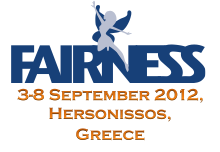Sprecher
Dr.
Sascha Vogel
(FIAS)
Beschreibung
One of the fundamental objectives of experiments with ultra-relativistic heavy ions is the study of hadronic matter at high density and high temperature. Presumably matter at such high densities or temperatures shows effects like the restoration of chiral symmetry or the formation of a quark gluon plasma. In this presentation the information which can be obtained by analyzing baryonic and mesonic resonances in both hadronic and leptonic decay channels is discussed. The decay products of these resonances carry information on the resonance properties at the space time point of their decay.
We especially investigate the percentage of reconstructable resonances as a function of density for heavy ion collisions in the energy range between $E_{lab}$ = 30~AGeV and $\sqrt{s}$ = 200~AGeV, the energy domain between the future FAIR facility and the present RHIC collider. We will show the dependency of the chance to detect resonances as a function of transverse momentum, as well as density-dependent probability distributions of reconstructable resonances. We also will discuss the differences between the various resonances and the origin of those differences.
We conclude that the hadronic, as well as the leptonic decay channels only offer a restricted view on the high density zone of a heavy ion collision, however also discuss measurements which might circumvent those problems.
Autor
Dr.
Sascha Vogel
(FIAS)

